Category: Design
Triumph Spitfire Versus Supermarine Spitfire: Cars fight their flying namesakes
Cars and planes often share names. Sometimes it’s because car manufacturers want to evoke the glamour of the plane and sometimes it’s coincidence. We pit these namesakes against each other, to find out see which is more worthy of their name. Contestants ready? Fight!!
Round 1. Buick Wildcat II versus Grumman F4F Wildcat
Winner: Grumman F4F Wildcat
Round 2: Triumph Spitfire Versus Supermarine Spitfire
Winner: Supermarine Spitfire
Round 3: Volkswagen Caravelle Versus Sud Aviation SE 210 Caravelle
Winner: Sud Aviation SE 210 Caravelle
Round 4: Mitsubishi Mirage Versus Dassault Mirage III
Winner: Dassault Mirage III
Round 5: Lincoln Zephyr Versus QinetiQ Zephyr
Winner: Lincoln Zephyr
Final score: Planes 4 Cars 1
Other examples include:
| Airspeed Ambassador / Austin Ambassador | |||||
| Atlas Impala / Chevrolet Impala | |||||
| Beagle Terrier / Leyland Terrier | |||||
| Beech Baron / Chrysler Le Baron | |||||
| Beech Sierra / GMC & Ford Sierra | |||||
| Cessna 208 & 406 Caravan / Dodge Caravan | |||||
| Cessna 404 Titan / Leyland Titan | |||||
| Dassault Falcon / Ford Falcon | |||||
| Fairchild Metro / Austin (Rover) & GEO Metro | |||||
| HP Herald / Triumph Herald | |||||
| HP Victor / Vauxhall Victor | |||||
| IAI Astra / Vauxhall (Opel/Saturn) Astra | |||||
| Lockheed C-5 Galaxy / Ford Galaxy | |||||
| Northrop Talon / Eagle Talon | |||||
| Piper (Ted Smith) PA60 Aerostar / Ford Aerostar | |||||
| Piper PA22 Colt / Mitsubishi Colt | |||||
| Piper PA23 Aztec / Pontiac Aztec | |||||
| Piper PA28 & Bombardier Challenger / Dodge Challenger | |||||
| Piper PA28 Cherokee / Jeep Cherokee | |||||
| Piper PA28 Cruiser / Chrysler PT Cruiser | |||||
| Piper PA46 Malibu / Chevrolet Malibu | |||||
| Sikorsky S76 Spirit / Dodge Spirit | |||||
| Sud Caravelle / VW Caravelle | |||||
| Supermarine Spitfire / Triumph Spitfire | |||||
| Vickers Vanguard / Vauxhall Vanguard | |||||
| Vought & Cessna 425 Corsair / Ford Corsair | |||||
| Vought F7U Cutlass / Oldsmobile Cutlass | |||||
If you enjoyed this, have a look at the top ten British, French, Swedish, Australian, Japanese and German aeroplanes.
Follow my vapour trail on Twitter: @Hush_kit
See the donate buttons at the top and bottom of this page? That’s how you can help this aviation blog keep going. Your help is vital. Many thanks 🙂
The Mikoyan MiG-37: A brief history of Russian stealth (in fact and fiction)
On November 10 1988, a heavily airbrushed photo was shown at a press briefing by Assistant Secretary of Defense for Public Affairs, J. Daniel Howard. Until that moment the subject of the photo had been one of the world’s most closely-held secrets.
The photograph was of the Lockheed F-117, the legendary ‘stealth fighter’.
It was a new and weird shape. Slightly preceding this, (in April 1988) the Northrop B-2 had also emerged from the Black world of secret defence projects. The B-2 ‘stealth bomber’ was a charcoal grey flying-wing, clearly designed by the same person who had created the Batmobile.
Stealth was big news. Until then, aeroplanes had been tubes with wings, designed primarily with air particles in mind, now they were shaped for their reaction with radio waves; things had suddenly changed. As an aeroplane-fixated ten-year-old, I was hungry for more information on this new world. With its secrecy, its potency and dramatic unveilings, it was wildly exciting.
So I was very happy when I was bought a copy of Stealth Warplanes, a book by Doug Richardson. I believed that this book, with its thrilling cover, was my secret pass to the nefarious world of Stealth. I picked up another copy today, as I was curious to see how well this book had stood the test of 23 years.
‘Mikoyan MiG-37’
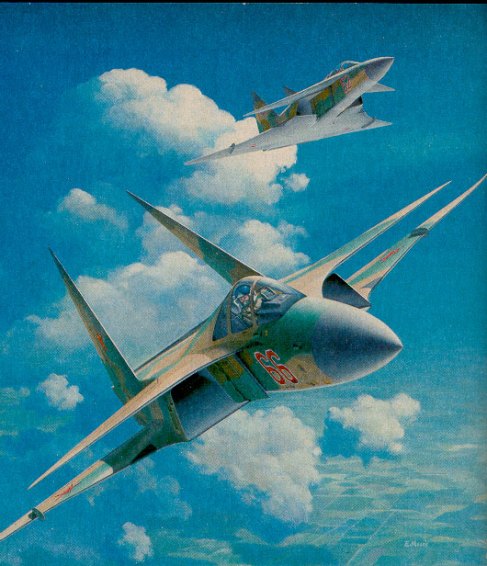
Ward’s MiG-2000 featured inward canting fins. Another popular ’80s idea for stealth aircraft, possibly stemming from leaked information on Lockheed’s ‘Have Blue’.
Soviet developments could not be ignored by the book, despite the fact that at this time, nothing about Soviet stealth projects was known in the press. So the ‘Mikoyan MiG-37’ was pure conjecture, based on the pure ‘conjecture’ (more on this later) of the MiG-2000. The MiG-2000 was a notional threat aircraft devised by General Dynamics’ Richard Ward, of what a follow-up to the MiG-29 might look like. It was intended to give the international F-16 community an idea of what they may be up against in the year 2000. This was based on Ward’s observations of several technologies the Soviets appeared to be very interested in, most notably thrust vectoring and the canard-delta arrangement. At this time, it was rumoured that the MiG-35 was to be a single-engined aircraft in the F-16-class, though in retrospect it is more likely that this rumour related to the Izdeliye 33 (Izd 33) which would have probably been designated MiG-33 (and may have been a design influence on the JF-17).
Regardless, it looked to many observers that MiG-37 seemed the most likely designation for the first Soviet stealth fighter. As the text points out:
“In the autumn of 1987, the US plastic model manufacturer Testors.. launched its model of the “MiG-37B Ferret E”- a Soviet equivalent to the Lockheed stealth fighter. Its appearance must have caused a few smiles around the Mikoyan design bureau. As its manufacturer admitted.. Its reception in the Pentagon must have been less amusing. Here in widely-distributed form was the first model to widely illustrate the use of RCS reduction technique.” (more on Testor’s MiG-37 can be seen here). It seems that the concepts of a gridded intake and a surface made of flat panels was already there for those looking. And Testors’ model designer John Andrews certainly seemed to have his ear to the ground.
One of the fascinating features of this book was its strong belief in ‘round stealth’. Many of the hypothetical aeroplanes in this book feature rounded-off wingtips, noses and fin-tips of the hypothetical aircraft. Radar returns would be scattered from these curves:
“…the rounded planform (of the MiG-37) shown here would ensure that reflected energy was scattered over a range of directions.”
In reality, this design idea was never used (albeit to a small degree on some cruise missiles), and it could be argued that the cultivation of this idea was the result of deliberate disinformation by several companies. Loral, Northrop and Lockheed (in several ATF artworks) may have been actively involved in this attempt to draw attention away from the F-117-facetingand B-2 flying wing approach. This idea can be seen on most ‘F-19s’ and is evident on this MiG-37.
Of course complex curves are used in modern low observable designs, but this ‘round stealth’ is not like the two US schools of stealth that have emerged, the Lockheed approach (sharp angles and flat surfaces) and the Northrop approach (as flat as possible, and of the flying wing configuration for subsonic designs, as seen on the B-2, Lockheed Martin RQ-170, Dassault NeuroN etc). When Northrop and McDonnell Douglas designed the YF-23, they incorporated the ‘flat as a pancake’ Northrop approach.
The notional MiG-37 is a tactical fighter that weighs around 50,000 lb and is powered by two 30,000 lb (in reheat) thrust class turbofans. It has two-dimensional vectored thrust provided by ‘slotted low-RCS nozzles’. It is a two-seater, with a canard delta planform and two canted out vertical fins. The concept emphasizes performance and reduced radar cross section.
Did history provide us with a real MiG-37 to compare it to? The simple answer is yes. The Mikoyan Project 1.44/1.42 was a technology demonstrator that first flew in 2000. It displayed some similarities to Richardson’s MiG-37.
MiG 1.44/1.42
It was a canard delta, it did have out twin canted tails. The thrust class was similar, though the real aircraft was even more powerful, with two Lyulka AL-41F turbofans rated at 176 kN (39,680 lb) in reheat. Weight was between 42-62,000 lb depending on fuel load, test equipment etc, so again- excellent guesswork. It certainly did not have rounded-off wingtips or tail-fins. The nozzles were not flat, despite the stealth advantages these could have conferred. The reason for the inclusion of round exhaust nozzles could have been one or more of the following-
1. 3D vectoring was envisioned, requiring a circular nozzle (perhaps extreme manoeuvrability was considered more important than minimum RCS)
2. Russian metallurgy was not good enough to make square nozzles which could withstand the high temperatures of a vectoring jet nozzle
3. The actual production version if made, would have featured 2D nozzles
4. They were not required or were not consider a suitable design feature
It was claimed that the aircraft would feature plasma stealth technology, an exotic idea that a General Electric employee had filed patents relating to in 1956. Little has been heard about plasma stealth since, though the fact that the later PAK FA is so carefully shaped suggests it is not a technology that was made to work satisfactorily. Problems in developing working plasma stealth include the generation of sufficient power to create the required plasma layer, and the operation of radar and radio in what amounts to a ‘radio blackout’. Talk of this technology may have been deliberate disinformation.
The MiG 1.44/1.42, a candidate for the Mnogofunksionalni Frontovoy Istrebitel (Multifunctional Frontline Fighter) programme was cancelled (though some contend that research from this effort found its way into the Chengdu J-20 project though there is no direct evidence of this). Sukhoi’s rival S-47 ‘Berkut’ took a radically different approach and adopted canards with forward swept wings, as can be seen from later developments this configuration appears to have been a design dead-end, at least for the time being.
As far as we know MiG’s current stealth efforts are devoted to developing a Northrop-style UCAV with Sukhoi (using experience gained on MiG’s cancelled ‘Skat’ UCAV).
The Russian stealth fighter in development today is the Sukhoi PAK FA. The design features with some smaller similarities with Richardson’s MiG-37. Both the ‘MiG-37’ and the PAK FA feature a IRST/laser ranger finder (à la MiG-29/Su-27)- something the Russians very much appreciate, and there seems relatively little effort to reduce this sensor’s radar cross section.
It appears the PAK FA is built with a more attention to ease of maintenance than the ‘hygienically’ smooth Raptor, which seems to favour absolute minimum radar return (but this is pure speculation). The PAK FA does not have a canards (a difficult feature to make stealthy, nevertheless featuring on the J-20), instead, it has an innovative kind of movable leading edge root extension (described by some as Povorotnaya Chast Naplyva or PChN). The Sukhoi approach to stealth includes elements seen in both the Northrop and LM schools, but seems to have less emphasis on achieving a minute RCS to the detriment of serviceability and aerodynamic efficiency.
Richardson’s MiG-37 concept was, given the information available to him, an excellent piece of guesswork, and a pleasantly revealing insight into a ‘crossroads’ period of aviation history. It is also interesting that, on first impressions, the MiG-37 was a more accurate guess than Ward’s MiG-2000. However, there is more to the story than this, as Richard Ward was one of the most experienced figures in the design of stealth aircraft. General Dynamics had inherited a wealth of stealth research from Convair, from projects including the A-11 and Kingfish. Ward probably worked on the Model 100/Sneaky Pete and other A-12 precursors. As Bill Sweetman said to Hush-Kit: “He knew what to avoid with MiG-2000.”
The PAK-DA is a new stealth bomber project at a very early stage of development.
Follow my vapour trail on Twitter: @Hush_kit
Thank you for reading Hush-Kit. Our site is absolutely free and we have no advertisements. If you’ve enjoyed an article you can donate here– it doesn’t have to be a large amount, every pound is gratefully received. If you can’t afford to donate anything then don’t worry.
At the moment our contributors do not receive any payment but we’re hoping to reward them for their fascinating stories in the future.
As a thank you….
Those who donate more than £50 may ask for a short article on a particular subject.
Those who donate more than £100 may ask for a long article on a particular subject.
Special thanks to the great Bill Sweetman for ironing out several of the facts in the original version of this. There are likely to be further amendments to this piece at a later date.
“If you have any interest in aviation, you’ll be surprised, entertained and fascinated by Hush-Kit – the world’s best aviation blog”. Rowland White, author of the best-selling ‘Vulcan 607’
NOW AVAILABLE: The Hush-Kit Book of Warplanes, a gorgeous heavily illustrated – and often irreverent- coffee-table book covering the history of aviation 1914 – the present.
From the cocaine, blood and flying scarves of World War One dogfighting to the dark arts of modern air combat, here is an enthralling ode to these brutally exciting killing machines.
The Hush-Kit Book of Warplanes is a beautifully designed, highly visual, collection of the best articles from the fascinating world of military aviation –hand-picked from the highly acclaimed Hush-kit online magazine (and mixed with a heavy punch of new exclusive material). It is packed with a feast of material, ranging from interviews with fighter pilots (including the English Electric Lightning, stealthy F-35B and Mach 3 MiG-25 ‘Foxbat’), to wicked satire, expert historical analysis, top 10s and all manner of things aeronautical, from the site described as:
“the thinking-man’s Top Gear… but for planes”.
The solid well-researched information about aeroplanes is brilliantly combined with an irreverent attitude and real insight into the dangerous romantic world of combat aircraft.

Rockwell fighter concepts
A GALLERY OF FANTASY AEROPLANES: 1900-1969
Sixties Superfighters: The Original JSF- the Italian V/STOL FIAT G.95 ‘Resistenza’

An Italian air force Fiat G.95/4 blasts off from a dispersal site. In the event of war, the G.95 would have left vulnerable, fixed runways to hide out in the countryside.
Giuseppe Gabrielli (1903-87) was the undisputed master of Italian aeronautical engineering. He designed over 140 aircraft, including the G.55 Centauro, one of the finest fighters of World War II. His designs carried a G-prefix, and included the G.222, the basis of today’s superb C-27J Spartan ‘mini-Hercules’. In the 1950s, his G.91 design won a 1950s competition to provide NATO with a cheap, tactical support fighter. Following this victory, it was only natural that Italy would enter the next NATO fast jet competition. An epic contest began to equip NATO with a ‘resistance’ fighter, one that could bring the fight to the enemy on day two of a nuclear war.
In the early 1960s, NATO put out a requirement for a common ‘jump-jet’ (though the term was yet to be coined) fighter-bomber. With a strong possibility of all member nations buying the fighter, it became the biggest international design contest that had been ever held. Whichever company won the competition stood the chance to make an enormous profit and become the world’s dominant defence contractor. It was a tough brief, demanding a supersonic jet aircraft able to take-off and land vertically. The requirement, NATO Military Basic Requirement (NMBR) 3, did not specify a technical solution to the problem of V/STOL and the many bidders adopted different solutions.

The very beautiful G.55 Centauro was a very potent fighter aircraft. The Luftwaffe were very impressed by the aircraft and a German version was planned (the G55/II), it would have been fitted with the DB 603 engine, five 20-mm cannons and a pressurised cockpit.
Fiat’s first stab at NMBR-3 was the baseline G.95 concept. This was relatively small and showed some G.91 ancestry. It was powered by one forward flight engine and two small auxiliary engines with vectored thrust. It had shoulder-mounted intakes and a conventional tail.
Fiat then began studying the use of lift-jets. Lift-jets were auxiliary engines fitted vertically inside the aircraft, which propelled the aircraft during vertical take-offs and landings. Once the aircraft was in forward flight they were switched off. The concept had been around at least as far back as the 1940s and has been attributed to both German propulsion engineers and the British jet genius Alan Arnold Griffith (he had been the Air Ministry’s advisor that had dismissed Whittle’s 1930 turbine thesis, he later led the Conway and Avon engine projects). The rather dainty G.95 was followed by a more butch study, the G.95/3. The handsome G.95/3, which would have resembled the McDonnell F-101 Voodoo, had two widely-spaced forward flight engines and four lift engines and a high T-tail.
The G.95/6: The ‘Supersonique Salsiccia’
This was followed by the G.95/6, an enormously elongated fighter with tiny wings. With its high performance, tiny wing area and dependence on eight engines, the fighter would have been unforgiving and likely to have had a terrifying attrition rate. The /6 concept had two forward flight engines and no less than six lift jets. Eight engines would have presented the G.95/6 with several challenges if it had entered service. The complexity of the design would have made it maintenance heavy and would have reduced fleet availability. The six lift engines would have been a dead weight during normal flight, reducing the range or payload or both. However, if it had been built made it would have certainly been an awe-inspiring machine- combining noisy vertical take-offs (fuel and thrust allowing) with predatorial good looks.
 Any ‘jump-jet’ is by nature a compromise and is inferior to its conventional equivalent. Was it worth accepting these limitations? Developing a supersonic jump-jet would have been expensive, risky and led to a less capable aircraft. Was War World Three likely enough to merit this? If tactical nuclear warfare had happened would these doomsday fighters have been able to fight on? The NMBR-3 winner would be expected to operated from dispersed temporary airbases during periods of chaos. A vast logistical feat, which as the RAF found out with the Harrier proved costly and difficult.
Any ‘jump-jet’ is by nature a compromise and is inferior to its conventional equivalent. Was it worth accepting these limitations? Developing a supersonic jump-jet would have been expensive, risky and led to a less capable aircraft. Was War World Three likely enough to merit this? If tactical nuclear warfare had happened would these doomsday fighters have been able to fight on? The NMBR-3 winner would be expected to operated from dispersed temporary airbases during periods of chaos. A vast logistical feat, which as the RAF found out with the Harrier proved costly and difficult.
By early 1962, the NMBR-3 project was in crisis. The NATO planning group in charge of selecting a design was finding out that no one aircraft type could meet all the nations’ differing requirements, and even if one did, there was no obligation for the air arms to purchase the type. The committee gave up.
However, by now so much time and money had been put into the each NMBR-3 candidate that they carried a momentum of their own. The two strongest projects were Britain’s P.1154 (which was expected to replace RAF Hunters and to a less-likely extent Royal Navy Sea Vixens) and France’s Dassault Mirage IIIV which was getting solid government backing. The G.95/6 was a wild outsider, and seemed to have little chance of reaching the flying stage as it had yet to receive government funding.
By June 1963, this had all changed. Fiat Aviazone had received a contract from the Italian air force for a new strike aircraft (and a transport aircraft to support it). Fiat was given a sum equivalent to £600,000 (at a 1963 exchange rate), today this would be worth around £15 million. This was enough to fund a flying test rig, powered by RB.108s.
G.91/4
At the time the Italian Government as well as many at Fiat saw that dream of a Mach 2 VTOL fighter was pushing the limit of the current technology (even in 2012 it’s far from easy). They suggested a simpler interim aircraft capable of replacing the G.91. The aircraft, designated G.95/4, would have a top speed of between Mach 1 and 1.3. It was faster than Britain’s P.1127, and was likely to have a longer range. As well as being a sensible idea, the /4 was a tacit acknowledgement that Fiat was unlikely to have the /6 ready any time soon and was even less likely to achieve export orders against stronger international competitors. Lift for the /4 was from four RB.162-31 jets each with more than 2,000 lbs of thrust. Forward thrust was expected to come from two Rolls-Royce/MAN RB.153s. West Germany and Italy joined together to develop a V/STOL G.91 replacement on April 9, 1964. The competitors for VAK-191, were:
- The British VAK-191, based on the Hawker P.1170
- The West German VAK-191B, the Focke-Wulf 1262
- The VAK-191C (also West German) was the EWR-340 (VJ-101D)
- The VAK-191D, Italy’s Fiat G.95/4
The official statement by the German Defence Ministry named the Focke-Wulf 1262 (VAK-191) as the chosen aircraft; though it hadn’t been announced, it was clear that the G.91/4 was dead. Having already been funded by the air force, it would stagger on as research project, but the writing was on the wall for Italy’s doomsday fighter. The G.91/4’s status at this time is nebulous, but appears to be associated with the VAK-191 project. It also seems to have been a project to keep an advanced aerospace skills set in Italy as by 1965, Fiat had almost finished licence-building the F-104Gs it had been contracted for and was desperate to secure follow-on work. The /6 had disappeared by now and the duplication of efforts of working on the VAK-191B as well as the G.95/4 was clearly wasteful, by 1968 the /4 was officially abandoned as anything other than a research project.
The curse of V/STOL would eventually kill the VAK-191 too. In the end, despite all the thousands of millions of dollars invested in fast jump-jets, led to only two entering service, the British (later Anglo-American) Harrier and the barely supersonic (and very limited) Soviet Yak-38.
B is for Bevilaqua
No nations were willing to accept the compromises and risks involved in procuring a truly supersonic jump-jet. The technical challenge continued to fascinate aircraft designers, but many hard-headed military thinkers saw it as folly. The Royal Navy, USMC and Soviet Navy carried the flame through the 1970s. The US Navy took an uncharacteristic foray into ‘flat-risers’ with the Rockwell XFV-12, which proved utterly useless and further cemented the service’s anti-STOVL sentiments. The Soviet Navy, with no conventional carrier experience, was the last nation to pursue this Cold War dream. The Soviet Yakovlev Yak-41 (141) was a remarkable aircraft, with unique capabilities. It first flew in 1987, but a long development meant it was not in service by the time the Soviet Union was collapsing. Yakovlev embraced a changing world and did the unthinkable, it looked for foreign investors. America, which until a couple of years ago had been the arch-enemy, stepped forward. Lockheed (later Lockheed Martin) was then developing a candidate for the Joint Strike Fighter, the X-35, and cleverly absorbed all of Yakovlev’s relevant research data. The propulsion system of the STOVL X-35 differed from the Yak in one key respect; whereas the Russian aircraft augmented the vertical thrust from a swivelling ‘lobster’ back nozzle with a separate lift engine, the X-35 employed a lift-fan driven by shaft from the main engine. The X-35 won the JSF contest, leading to the F-35 now in development. The STOVL version of the F-35 is the B variant.
The graveyard of aborted aircraft projects is littered with dozens of jump-jet projects; will the F-35B overcome this curse?
STOVL tomorrow
Whereas ‘survivability’ had been the word used to force through the jump-jet concept in the 1960s, today the catchword is ‘expeditionary’, but is it worthwhile? With the F-35B set to enter service with the USMC, the British RAF/RN and the Italian Navy in the next ten years, some still question the sense of STOVL. In November 2012 the first F-35Bs were delivered for Marine Fighter Attack Squadron 121 of the USMC. This event is largely for show as there is still a great deal of work to do before the F-35B will be anywhere near combat-ready. Time will tell if the Holy Grail was worth the long search.
Want to see more stories like this: Follow my vapour trail on Twitter: @Hush_kit
The basic running of the Hush-Kit blog (which makes no profit) costs money. Help us carry on – without adverts. If you’ve enjoyed an article you can donate here or here. Thank you lovely reader.
Have a look at 10 worst British military aircraft, Su-35 versus Typhoon, 10 Best fighters of World War II , top WVR and BVR fighters of today, an interview with a Super Hornet pilot and a Pacifist’s Guide to Warplanes. Was the Spitfire overrated? Want something more bizarre? The Top Ten fictional aircraft is a fascinating read, as is The Strange Story and The Planet Satellite. The Fashion Versus Aircraft Camo is also a real cracker. Those interested in the Cold Way should read A pilot’s guide to flying and fighting in the Lightning. Those feeling less belligerent may enjoy A pilot’s farewell to the Airbus A340. Looking for something more humorous? Have a look at this F-35 satire and ‘Werner Herzog’s Guide to pusher bi-planes or the Ten most boring aircraft. In the mood for something more offensive? Try the NSFW 10 best looking American airplanes, or the same but for Canadians.
World War II Military Aircraft: THE UNTOLD STORY
Vice magazine’s Bruno Bayley takes a look at what an aircraft says about the nation that produced it.
AUTHOR’S DISCLAIMER: Two things to note – both probably more than obvious: This is not meant to be a conclusive look at national output of aircraft. Each country, had for the one aircraft picked below, an opposite, which would in no way suit my argument. Secondly, the exercise is almost by definition skirting the edges of xenophobia, and will draw upon some clichés. But what fun is revisiting the Second World War’s aircraft without a healthy slosh of xenophobic blinkeredness?

This propaganda poster features British and Soviet aircraft shooting down a Luftwaffe Ju 87, with a caption in Persian for distribution to Iran.
USSR – Ilyushin Il-2
There is a well-worn, and possibly false, anecdote about the Soviet nail factory that met its quotas by producing a two-ton nail. Or maybe that was just a lie my history teacher told me. Either way, it sort of sums up the target obsessed insanity of Stalin’s Russia. The Il-2, possibly more perfectly than any other aircraft in this run down, sums up the mentality of the regime that created it.
Produced more numerously than any other aircraft in the war, the Il-2 was the primary Soviet ground attack weapon. Ugly, heavy, crude, and easily mass-produced it suited the appalling conditions of the Eastern Front as well as the staggering requirements of a nation already reeling from the initial success of Hitler’s Operation Barbarossa.
In a slightly callous fashion, that many associate with the wider Stalinist mentality (not without just cause) the pilot was ensconced in thick armour plating, as was the engine, while the rear gunner was left fairly exposed, often equipped only with a standard issue machine gun on a rope bungee. It should be noted however, that the Il-2 was designed as a single seat aircraft and the rear gunner position was added to try and stop crippling losses.
Though loses were heavy with Il-2 units, quite possibly a result of the Soviet policy of not returning to base with unspent ammunition, their impact on the Eastern front has long been attested to. Not least at the typically grim Battle of Kursk where they claimed a great many German tank kills.
If any aircraft sums up the mass-production obsessed, brutal, and grimly effective nature of Stalin’s Russia it is the ‘hunchback’.
BRITAIN – Hawker Hurricane
Sydney Camm’s greatest work – the Hurricane – was an evolution of interwar aircraft like the Hawker Fury and Hart. The Hurricane was essentially a monoplane version of the Fury and was explicitly referred to as the ‘Monoplane Fury’ in Air Ministry and Hawker correspondence. It was known as the ‘Interceptor Monoplane’ from 1934 and the Hurricane name was formally adopted in 1936. The Hurricane was an evolution of the interwar Fury fighter .
Built expressly to use the Merlin engine that would also equip greats of the war like the Supermarine Spitfire, P-51 Mustang, Avro Lancaster, and the de Havilland Mosquito among others, the Hurricane cruelly lived in the shadow of the sexy Spit. However, in spite of being more portly and far less lauded, the Hurricane racked up over 60% of the RAF kills during the Battle of Britain, went on to be a prestigious tank-buster in North Africa, night-fighter, and carrier and catapult launched naval fighter – known as Sea Hurricanes and Hurricats and respectively.
The Hurricane embodied the ballsy pugnacity of war-time Britain, frankly outdated as a design by the start of the war, its blending of inter-war and modern construction techniques made it easier, cheaper, and faster to build (and repair) than all metal craft like the Spitfire (and made it more battle-resistant). Its rear fuselage draped with doped fabric (as were the wings on some versions) it didn’t eat into the Nation’s meager supply of desperately rationed metals. If any craft summed up the stiff upper lip, ingenuity under pressure, and slightly stuffy geography teacher air people associate with 1940s Britain, this was it.
GERMANY –Messerschmitt Me 262
Perhaps the most staggering thing about the Luftwaffe in the war, was the volume of wasted potential – in both leaders, pilots, and most crucially, machines. The Me 262, the first jet fighter to enter widespread service (the very first had been the He 280), typified both the exceptional potential of Germany’s scientists and designers as well as the insane impact of political meddling in Hitler’s Reich.
First conceived in 1938, and prototyped in 1941, it was only in the later months of 1944 that Hitler showed enough faith in the 262 to push it into full-blown production. He, and under him Goering, had spent the previous years insisting on the mass production of tried and tested models like the 109, 190, Ju 88 – all of which were retro-fitted endlessly to fulfill any task – ultimately to the detriment of the original aircraft. As well as that, an obsession with producing troublesome new ‘defensive’ bombers, like the Do 217 hampered jet fighter production.
Had the 262’s almost miraculous potential to repel the round-the-clock bombing offensives of the USAAF and the RAF been recognized earlier, things may well have been different. Even once operational, many of these excellent fighters were modified to carry almost ineffective bomb loads, or to house heavy cannon for ground attack roles. In the last days of the war, the few operational Me 262s formed one of the most elite air units of the war – Jagdgeschwader 44, headed by the pre-eminent ace Adolf Galland and made up of numerous top aces of the Luftwaffe. By the end of the war, only around 100 of the 1,433 Me 262s built had seen combat. The Me 262 was a testament to a system plagued by meddling and misguided policies spurred on by blind optimism and a refusal to face facts.

Many Me 262s were produced by Slave labour. It is rumoured that some Me 262 workers sabotaged the engine components by urinating on them.
ITALY – Macchi C.202 Folgore
As my grandfather used to say – what’s the difference between toast and Italians? The answer being that you can make soldiers out of toast. And the chortle goes around. True enough, the Italians had a rough time of it in the war, but their Macchi C.202, or Folgore (‘lightning‘) was about the only plane that could line up with the Spitfire in the ‘Miss Pretty Aeroplane of the War’ pageant. Superbly good-looking, with the cockpit sat far back on the fuselage. Possibly the most stunning feature of the Folgore was its wings. Not in that they were especially pretty in most aspects, but in that one was a whole eight inches shorter than the other, a design quirk that offset the propeller torque – a trick that Reggiane did it as well with the Re 2005.
But true to those stereotypes, the beautiful fighter was under-armed, and though a stunning piece of kit, never had the impact it could have on a fashion runway. In the Mediterranean theatre it outclassed the underwhelming P-40 Kittyhawk and out-flew the Hurricane, but was somewhat late to the party in North Africa, where it could have provided solid fighter cover for the embattled Italian troops.
The blame for the Folgore’s lack of impact could arguably be placed at the feet of the Italian air industry overlords who ignored the evidence (Italy having won the world speed record in 1934 with its in-line-engine-powered Macchi C.72) and focused on heavy duty radial engined fighters, rather than embracing the often speedier, in-line, options. The Folgore was destined to be a beautiful, iconic, and essentially irrelevant ghost at the air war ball.
Read more about World War II Italian fighters here: https://hushkit.wordpress.com/2012/05/18/from-prancing-stallion-to-chubby-ass-and-back-again/
USA – Republic P-47 Thunderbolt
The most iconic American fighter of the war, the P-51 Mustang, was also rather exceptional by American design standards. It was originally built for the RAF, and at first a rather disappointing product until the introduction of the Rolls-Royce Merlin engine. It was a sleek, almost pretty, aircraft (far prettier after its upgrading to a bubble cockpit) with an in-line engine. Aside from the Airacobra / Warhawk families and so on – all generally below par as purebred fighters – the typical American approach to fighter aircraft was based around heavy, powerful, radial engines. The planes themselves also tended to be heavy and tough.
Machines like the Corsair and the Hellcat (and Wild/Bearcats) conformed to this type well. The P-47 thunderbolt however was the epitome of that attitude and reflected America’s wealth in both financial and material terms.
“Tubby and verging on ugly, it developed a reputation for taking punishment”
It was the heaviest and most expensive single (piston) engined fighter of World War II. Few ‘single piston’ aircraft ever surpassed the ‘Jug’ regarding weight, with the exception of the experimental Boeing XF8B-1 and the post-war Eagle-powered Wyvern and Douglas A-1 Skyraider. Tubby and verging on ugly, it developed a reputation for taking punishment, and the nickname the ‘Jug’. Though surpassed by the Mustang as a bomber escort, the Thunderbolt’s armor plating, ruggedness, and ability as a weapons platform made it an exceptional ground attack aircraft. There is a tale of a National Guard P-47 over-shooting a runway in 1946, going through a wall, and the pilot then climbing out and trotting off. Pretty sturdy.
Bruno Bayley is the Managing Editor of Vice Magazine. From an original idea by Juanita Franzi. Juanita’s excellent aviation illustrations can be seen at: http://aeroillustrations.com/
The Hawker Siddeley P.1154: Britain’s cancelled supersonic jump-jet
The dream of a supersonic STOVL (Short Take-Off and Vertical Landing) fighter has been striven toward for over half of the history of heavier-than-air flight. When the F-35B reaches real operational readiness with the USMC, it will be a very significant event. Lockheed Martin will have succeeded where dozens of the world’s greatest aircraft design houses have failed. The tortuous road which led, via the Harrier, to the F-35B started with NATO requirement NBMR-3 of 1961. This almost led to a British superfighter, the Hawker P.1154.
Help Hush-Kit to remain independent by donating here. Donations enable us to carry on creating unusual and engaging articles. Thank you.
The author of Catch-22, Joseph Heller, fought with the 340th Bomb Group in Italy as a bombardier on B-25s. His commander was one Colonel Willis Chapman. Following the war Chapman set up USAF’s first jet bomber force. In 1956, Chapman was sent to Paris as part of the Pentagon’s Mutual Weapons Development Plan (MWDP) field office. His mission was to source and help develop new military technologies from European sources and strengthen Europe’s contribution to NATO.
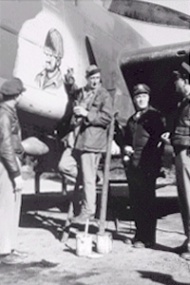
Chapman was commander of the ‘Catch-22’ bomber group. Chapman’s daughter’s excellent book revealed that the characters in the book were barely different to those in reality.
Chapman was soon approached by Michel Wibault, a visionary French aircraft designer (he had been an early exponent of the use of metal in aircraft exhibiting a very advanced metal wing years earlier, at the 1921 Paris air show).
The basic principle of Wibault’s concept was that the thrust of an engine could be directed through four swiveling nozzles. The thrust could then be directed downwards to allow an aircraft to take-off vertically or swiveled back to facilitate forward flight. Wibault had designed a Vertical Take-Off and Landing (VTOL) fighter incorporating this principle.
Doomsday fighters
Why VTOL? By the mid-1950s it was obvious to many western military planners that, in the event of war, Warsaw Pact forces would quickly obliterate NATO airbases. For NATO aircraft to mount counter- attacks (some with tactical nuclear weapons), they would need to be able to operate from rough unprepared airstrips. These capability could turn air arms into survivable, ‘guerrilla’ forces able to fight on after the apocalypse. VTOL was also tempting to many navies; it could eliminate the traditional hazards of carrier landing. If an aircraft could ‘stop’ before it landed, the task of landing on a tiny, pitching deck would be far easier. Likewise, it could liberate ships from the need to carry enormously heavy catapult launch systems; it could even allow small ships to carry their own, high performance, escort aircraft.
Thank you for reading Hush-Kit. Our site is absolutely free and we have no advertisements. If you’ve enjoyed an article you can donate here– it doesn’t have to be a large amount, every pound is gratefully received. If you can’t afford to donate anything then don’t worry.
At the moment our contributors do not receive any payment but we’re hoping to reward them for their fascinating stories in the future.
Hooker’s expertise
Chapman was very impressed and brought the idea to the attention of Dr. Stanley Hooker, director of the British Bristol Aero Engine Company. At this time Bristol was at the forefront of jet technology.
Hooker was also impressed. The VTOL research aircraft then flying used a series of batty principles which either involved rotating the whole fuselage (the tail-sitters), the engine of the aircraft (sometimes with the whole wing) or carried a battery of auxiliary lift-jets which once in flight were dead weight. All were complex and involved very large design compromises. Contrary to this, Wibault’s principle was simplicity itself; it involved a single fixed-engine, and would allow for the precise control of the vectored thrust.

How the P.1154 would have looked in RAF service. This aircraft is seen in the colours of No.29 Squadron.
Hooker led a team to develop the BE.53, a vectored thrust engine based on the first two- stages of the Olympus engine. Hooker teamed up with the designer of the Hawker Hurricane, Sydney Camm, to develop a light fighter concept powered by the BE.53.
At the 1957 Farnborough air show Hooker and Camm met Chapman. They showed him the design for P.1127. By early 1958 the MWDP were funding the BE.53 engine. The P.1127 fighter was struggling to get funding, as Britain’s Ministry of Defence believed that there would be no future manned bombers or fighters. This belief was expressed in the 1957 White Paper on Defence (Cmnd. 124) by Duncan Sandys- the most hated document in British aviation history.
Duncan Sandys had been Chairman of a War Cabinet Committee for defence against German flying bombs and rockets during World War II, and during this tenure, he had accidentally revealed information about where the V1s and V2s were landing. This was a shocking error, allowing the Germans to accurately calibrate their weapons trajectories and endangering British lives. It also threatened to uncover Agent Zig-Zag, the famed double-agent, who at the time was feeding German intelligence false reports of bomb damage in London. His wartime experiences may have informed his belief in the late 1950s that missiles could take over from manned aircraft.
Help Hush-Kit to remain independent by donating here. Donations enable us to carry on creating unusual and engaging articles. Thank you.
Success
His 1957 report was also ill-judged, as 55 years later the UK is about to receive a new manned fighter (the F-35B) that is expected to remain in service for the next forty years.
As there was little official support in the UK, Hawker decided to fund building two prototypes itself, with some research support from NASA (who noted that, unlike rival VTOL aircraft, the P.1127 would not need a complex auto-stabilisation system). By the time Hawker had started building the prototypes, the MoD was interested and funded the building of four more. The P.1127 first flew on 19 November 1960 and proved very successful. It could take off and land vertically with ease, something dozens of research aircraft around the world had failed to do. But, it shared a deficiency with its rivals; an aircraft with a high enough thrust-to-weight ratio to lift vertically could carry little in the way of fuel or payload. This is where the P.1127 really came into its own. It was discovered that by putting the exhaust nozzle into an interim position (45 degrees) the aircraft could take off in very short distances at very low speeds (60 knots, around half the taking-off or ‘rotation’ speed of a Hawker Hunter). At this point, VTOL gave way to V/STOL (Vertical/Short Take-Off and Landing).
The MoD was now warming to the idea of a P.1127-based type and the RAF prepared a draft requirement (OR345) for a new V/STOL fighter of modest capabilities.
In 1961 NATO Basic Military Requirement 3 (NBMR-3) was issued. This followed on from the 1953 NBMR-1 (for a lightweight tactical strike fighter, which was won by the Fiat G.91 and the Breguet Taon – though the Taon never entered service). The NBMR-2 was for a maritime patrol aircraft, and was won by the Breguet Br.1150 Atlantic.
NBMR-3 specification called for a single-seat tactical close-support and reconnaissance V/STOL fighter. The requirement demanded a combat radius of 250 nautical miles at a minimum sea level speed of Mach 0.92, and 500 ft altitude, while carrying a 2,000 lb store. This was a doomsday fighter-bomber, able to launch a retaliatory tactical nuclear strike from whatever improvised airstrips were available – even including selected motorway sections, heavily cratered main runways or worse.
Hush-kit is reminding the world of the beauty of flight.
follow my vapour trail on Twitter: @Hush_kit
Help Hush-Kit to remain independent by donating here. Donations enable us to carry on creating unusual and engaging articles. Thank you.
The prospect of providing NATO with a common fighter soon attracted most major Western aircraft companies. NBMR-3 became the biggest international design competition ever held. Two months later NBMR-3 was split into two; AC 169a would cover a F-104G replacement, and kept the original demands: AC 169b was to be a Fiat G.91 replacement. AC 169b differed to AC 169a in calling for a lower payload-range requirement of 180 nautical mile range with 1,000 lb store.
Enter P.1154
At this point OR345 was dropped in favour of NBMR-3. Hawker Siddeley’s bid was the monstrous P.1154 powered by the insanely powerful Bristol Siddeley BS.100 engine.
The BS.100 was designed to produce a mighty 33,000 lb of thrust in reheat, around twice the power of the most powerful fighter engine then in service. The only engine with more power at the time was the Pratt & Whitney J58, which had yet to fly. The J58 was being developed for the top-secret Lockheed A-12 spy plane, which evolved into the SR-71 Blackbird. However, unlike the BS.100, at the speeds the J58 produced its maximum thrust, it was effectively a ramjet. As another example of how powerful the BS.100 was, the first fighter engine with greater power did not enter service until 2005 (44 years later). The engine was the Pratt & Whitney F119 and the aircraft was the Lockheed Martin F-22 Raptor. The potent BS.100 would have given the P.1154 a Mach 1.7 top speed, an unprecedented thrust-to-weight ratio and a scorching rate-of-climb. The aircraft was to be far more than just a brutish hot-rod, it was to be equipped with some very advanced avionics. Ferranti would provide the P.1154 with a radar which was at least a generation ahead of any other. The radar would feature both air-to-air and terrain-following modes. This was a true multi-mode radar, planned at a time when the world’s best fighters were carrying crude air interception radars with tiny ranges. The P.1154 would have one of the world’s first Head-Up Displays (HUD). The HUD is a piece of glass in front of the pilot with vital flight information projected onto it, which allows the pilot to keep his eyes up and looking ‘out’ and not to be distracted by looking down at instruments in the cockpit. The aircraft would also be fitted with another piece of innovative equipment, Inertial Navigation System (INS), a technology first seen in the V2 rockets that Sandys’ had accidentally aided!
But Hawker Siddeley was not the only company to be lured in by the big bucks promised by NBMR-3. Italy had been fucked over by NBMR-1. The contest had declared Fiat’s G.91 the winner, but nationalism got in the way. National governments which had been more than happy to support their own bids to the contest, grew shy when Italy won the contest, and the G.91 did not receive orders on the scale that could have been expected.
This time Fiat entered the handsome G.95: https://hushkit.wordpress.com/2012/07/27/sixties-superfighters-the-original-jsf-the-italian-vstol-g-95-resistenza/. France, Germany, and even the Netherlands, submitted designs. The Netherlands’ Fokker D.24 Alliance, to be produced with help from US’ company Republic was also powered by the BS.100. The very ambitious D.24 was also variable sweep (swing-wing).

A notional RAF No.111 Squadron P.1154. The Paveway IVs are not a representative weapon-load, as the type would have probably been retired prior to this weapon’s service entry.
Victory and conflicting demands
Hawker and Bristol’s P.1154 was declared the winner, but history repeated itself. Though nobody was tied to buying the winners of NBMR contests, it still seems unfair that no country outside of Britain was forthcoming in wanting to invest in P.1154. Hawker had been stitched-up far worse than Fiat had been. Still, at least Hawker still had a generous MoD budget to work with, and the type was elected to replace RAF Hunters and RN Sea Vixens- what else could go wrong? Two things. The first was the differing needs of the Royal Navy and the RAF. The RAF wanted a single-engined, single seater. The Navy wanted a two-seat, twin-engined aircraft. To some degree both the Navy’s wants may have been driven by safety regulations regarding nuclear-armed aircraft (though the single-seat Scimitar carried the Red Beard tactical nuclear bomb). The Royal Navy was also impressed by the McDonnell (later MD) F-4 Phantom II, and there were some within the Admiralty which considering this a safer option. Giving the P.1154 twin engines would involve a complex modification of the design. The BS.100 was too big, so Rolls-Royce Speys were selected. To stop a twin-engined P.1154 flipping over in the event of a single engine failure, a complicated twin-ducting concept was added (comparable to the V-22 Osprey’s transmission system). The Royal Navy also wanted a larger radar.
On top of this, P.1154 threatened the existence of the Navy’s big carriers, if these new machines could take-off in next to no distance, why did the navy need massive expensive carriers? It should be noted that the Navy intended to catapult-launch their P.1154s, using an US style of operation. The Navy’s self-preservation instinct was kicking in. While the RAF P.1154s could have been made to work (with limitations), many, even at Hawker, doubted the viability of the naval variant.
Technical problems
If the first major problem facing the P.1154 was inter-service differences, the second set were technical. The P.1154 would be firing hot, after-burning exhaust from its front nozzles down onto runways or carrier decks. The temperature was great enough to melt asphalt or distort steel- this was a big problem (the Yak-141 would later encounter similar problems). It would also churn up a potentially dangerous cloud of any present dirt.
Added to this was hot gas re-ingestion (HGR). The aircraft would be ‘breathing in’ its own hot exhausts on landing. This re-circulating hot air would raise the temperature in the engine to more than it liked, a very serious problem.
On 2 February 1965, the incoming Labour government, led by Harold Wilson, cancelled the P.1154 on cost grounds. Was this to be the end of V/STOL fighters? Well, fortunately not. While the P.1154 was being designed, Hawker had been busy developing the P.1127 into the Kestrel, with the help of funds from Britain, West Germany and the USA (initially from the US Army). This of course led to the Harrier, the famous jump-jet which today remains in service with the United States, Spain, Italy and India.
Hush-Kit would like to thank: Chris Sandham-Bailey from inkworm.com for his wonderful profiles, and Nick Stroud for providing access to his photographic archive.
Save the Hush-Kit blog. This site is in peril, we are far behind our funding targets. If you enjoy our articles and want to see more please do help. You can donate using the buttons on the top and bottom this screen. Recommended donation £10. Many thanks for your help, it’s people like you that keep us going.
Want to see more stories like this: Follow my vapour trail on Twitter: @Hush_kit
Thank you for reading Hush-Kit. Our site is absolutely free and we have no advertisements. If you’ve enjoyed an article you can donate here.
Have a look at How to kill a Raptor, An Idiot’s Guide to Chinese Flankers, the 10 worst British military aircraft, The 10 worst French aircraft, Su-35 versus Typhoon, 10 Best fighters of World War II , top WVR and BVR fighters of today, an interview with a Super Hornet pilot and a Pacifist’s Guide to Warplanes. Was the Spitfire overrated? Want something more bizarre? The Top Ten fictional aircraft is a fascinating read, as is The Strange Story and The Planet Satellite. The Fashion Versus Aircraft Camo is also a real cracker. Those interested in the Cold Way should read A pilot’s guide to flying and fighting in the Lightning. Those feeling less belligerent may enjoy A pilot’s farewell to the Airbus A340. Looking for something more humorous? Have a look at this F-35 satire and ‘Werner Herzog’s Guide to pusher bi-planes or the Ten most boring aircraft. In the mood for something more offensive? Try the NSFW 10 best looking American airplanes, or the same but for Canadians.

“If you have any interest in aviation, you’ll be surprised, entertained and fascinated by Hush-Kit – the world’s best aviation blog”. Rowland White, author of the best-selling ‘Vulcan 607’
I’ve selected the richest juiciest cuts of Hush-Kit, added a huge slab of new unpublished material, and with Unbound, I want to create a beautiful coffee-table book. Pre-order your copy now right here
TO AVOID DISAPPOINTMENT PRE-ORDER YOUR COPY NOW

From the cocaine, blood and flying scarves of World War One dogfighting to the dark arts of modern air combat, here is an enthralling ode to these brutally exciting killing machines.
The Hush-Kit Book of Warplanes is a beautifully designed, highly visual, collection of the best articles from the fascinating world of military aviation –hand-picked from the highly acclaimed Hush-kit online magazine (and mixed with a heavy punch of new exclusive material). It is packed with a feast of material, ranging from interviews with fighter pilots (including the English Electric Lightning, stealthy F-35B and Mach 3 MiG-25 ‘Foxbat’), to wicked satire, expert historical analysis, top 10s and all manner of things aeronautical, from the site described as:
“the thinking-man’s Top Gear… but for planes”.
The solid well-researched information about aeroplanes is brilliantly combined with an irreverent attitude and real insight into the dangerous romantic world of combat aircraft.
FEATURING
-
-
-
- Interviews with pilots of the F-14 Tomcat, Mirage, Typhoon, MiG-25, MiG-27, English Electric Lighting, Harrier, F-15, B-52 and many more.
- Engaging Top (and bottom) 10s including: Greatest fighter aircraft of World War II, Worst British aircraft, Worst Soviet aircraft and many more insanely specific ones.
- Expert analysis of weapons, tactics and technology.
- A look into art and culture’s love affair with the aeroplane.
- Bizarre moments in aviation history.
- Fascinating insights into exceptionally obscure warplanes.
-
-

The book will be a stunning object: an essential addition to the library of anyone with even a passing interest in the high-flying world of warplanes, and featuring first-rate photography and a wealth of new world-class illustrations.

Rewards levels include these packs of specially produced trump cards.



Pre-order your copy now right here
I can only do it with your support.
When jet fighters and cars meet: The story of the General Motors FIREBIRD hyper-car!
In his fascinating interview with Hush-Kit in May 2012, supercar designer Peter Stevens theorised on the often close relationship between aircraft and automobile design: “In aircraft terms all cars can be described as being reliant on ‘low speed aerodynamics’, but the actual shapes are often taken from very high speed aircraft”.
One of the most blatant examples of this idea at work was American car designer Harley Earl’s astonishing Firebird series of concept cars for General Motors (GM) during the 1950s. Powered by gas-turbine engines developed by Emmett Conklin and bristling with fins, bubble canopies and other aeronautically-inspired refinements, the Firebirds represented the high-point of America’s obsession with the jet age.
Earl was no stranger to using aircraft as inspiration — his Le Sabre concept car of 1951 was, as the name suggests, directly influenced by North American’s F-86 Sabre jet fighter, then fighting it out with Soviet MiGs over Korea. He had also long admired the unorthodox twin-boom layout of Lockheed’s World War Two-vintage P-38 Lightning, reflected in the designer’s fishtail fenders for later GM products. Earl was fascinated by the impression of speed that aircraft imparted, fighter aircraft in particular adhering to his concept of cars looking long and low, alert, ready to pounce.

“You ready Robin?” “Yes Batman” “Stick on some ragga and get the afterburner lit- we’re off to Nandos!”
Having introduced sharply-swept fins and wraparound windshields, both a prevalent part of contemporary fighter design, on the Le Sabre, Earl felt compelled to push further into the realms of the fantastic, often making almost impossible demands on his long-suffering technical team in the interests of pushing the envelope of American automobile design.
Reportedly, Earl was aboard an airliner during one of his frequent trips across the USA in the early 1950s when he read a short article in an in-flight magazine on the futuristic Douglas A4D Skyray, which made its first flight in January 1951. Earl was fascinated by the new Navy fighter and stared at the photographs in the article for more than an hour. Remarking that it was “a striking ship”, he tore the page from the magazine and put it in his inside pocket before settling into deep thought. When his travelling companion asked whether he was thinking of next year’s model and what it might be, Earl paused for a moment before slapping his breast pocket and saying “I have it right here”. Earl later recalled: “I was only answering the banter in kind. Then bingo, I decided I had kidded myself into something”.
Design and construction of the first Firebird began in 1953, the idea being to create a complete rolling laboratory in which state-of-the-art technology could be tested in real road conditions. It was also a clear opportunity for GM to showcase the extremes in technology and design that it was capable of. Given the company designation XP-21, the single-seat Firebird I was the first American car to be powered by a gas turbine engine, in the form of the 370 h.p. Whirlfire GT-302. Arguably the single most impractical car ever devised, the Firebird I comprised a bullet-shaped fibreglass fuselage with a single fin and short rounded delta “wings” (as on the Skyray), the driver being accommodated in a fighter-style cockpit with a bubble canopy. Flaps were also incorporated for braking purposes — another lift from aeronautical design. The car was driven by Conklin and racing driver Mauri Rose and found to be largely satisfactory, despite issues with noise, exhaust overheating and, unsurprisingly, extremely high fuel consumption.
Earl’s second Firebird, designated XP-43, was intended to parlay the lessons learned with the Firebird I into a more practical four-seat family car. With its distinctive double air intakes at the front, high bubble canopy and fin, the Firebird II was intended to be a component of GM’s “Safety Autoway of Tomorrow”, a rapid transit system which would take advantage of an “electronic brain” in the car, which received signals from a metallic conductor buried in the road, the magnetic device creating a form of autopilot for cars. The boffins at GM worked hard to get the system working and eventually conducted successful tests of what the company dubbed the “dream highway”. The Firebird II was the first car to have its entire exterior bodywork constructed from titanium, then being used in the construction of the USA’s state-of-the-art fighters such as the McDonnell F-101 Voodoo and Lockheed’s F-104 Starfighter — another of Earl’s appropriations of contemporary aeronautical techniques.
If the Firebird II reflected fighter aircraft design in the mid-1950s, the last — and most extravagant — of the Firebirds anticipated the cutting edge of the next generation of American warplanes, typified by Republic’s super-sleek F-105 Thunderchief, which entered US Air Force service in mid-1958. While GM’s engineers were perfecting the “electronic chauffeur”, Earl and his team were going for broke with a design that incorporated no fewer than seven wings and fins protruding from a science-fictionesque wedge-shaped main body.
Promotional material of the time dispensed with any pretence of subtlety and announced that the new Firebird would be “an entirely different kind of car, in which a person may drive to the launching site of a rocket to the moon”, the aeronautical terminology being supercharged to include the rapidly escalating space race. The new car, which incorporated double bubble canopies, cruise control and air-conditioning, was to be fitted with an extension of the Firebird II’s “ping-pong ball” control system, known as Unicontrol, in which steering, acceleration and braking would be performed by means of a single control stick, again echoing fighter cockpit design.
The initial tests of all three Firebirds were referred to as “first flights”, that of the Firebird III taking place at GM’s Desert Proving Ground in Phoenix, Arizona, in August 1958, the machine subsequently undergoing extensive trials in a windtunnel, as used for testing aircraft.
Publicly unveiled at GM’s 1959 Motorama show in New York City and Boston (actually held in October 1958), the Firebird III was a hit; the two-seat rocket-ship of the road fired the imaginations of the young and old alike. As on the Firebird II, Earl had sought to exploit aerodynamic braking in the form of air brakes, which emerged from flat panels in the Firebird III’s main body. The 225 h.p. Whirlfire GT-305 engine provided propulsion power only, a separate 10 h.p. two-cylinder powerplant being installed to drive the electrical and hydraulic accessories.
The Firebird III was not just a hit at the car shows; in April 1959 it was exhibited at the World Congress of Flight in Las Vegas, its space-age looks fitting right in with the highly advanced military hardware on view at nearby Nellis AFB.
The Firebirds were never seriously intended to be put into production, however earnest the brochures of the time were in suggesting otherwise, and although a Firebird IV ground-effect machine was built in mock-up form, GM decided that the III was the end of the line for the ambitious space-age Firebirds. The name, however, lived on in a series of Pontiac “ponycars” from 1967.
All three Firebirds still survive and have been acquired by GM, which aims to restore them to roadworthy status and possibly tour them at some stage. Happily, car designers are still very much taking cues from aeronautical developments, as Peter Stevens explained in his Hush-Kit interview: “I do think that designers are looking at things like the F-117 stealth fighter for inspiration; the Lamborghini Aventador is a good example of this trend”. Long may it continue.

1993 custom car designed to defeat police speed radars. Designed by Jim Router (formerly of Lotus and Mclaren). Not in any way mental.
By Nick Stroud, Editor of The Aviation Historian
The interview of Peter Stevens by Joe Coles can be found here:
Follow my vapour trail on Twitter: @Hush_kit
Taon
Her petite frame, unusual intakes and staggered muzzles!
I love you Breguet Taon.
The aircraft, designed for a NATO competition for a light tactical fighter, even set an international speed record. For the 1,000 km (620 mi) closed circuit, it achieved a speed of 1,046.65 km/h (650.36 mph) at 7,620 m (25,000 ft) on 25 April 1958. On 23 July it broke its own record, this time achieving 1,075 km/h (667.98 mph).
Despite its speed and cute looks the type was not ordered into production.
Est-ce que ton père a été un voleur ? Parce qu’il a volé les étoiles du ciel pour les mettre dans tes yeux.
The history of Italian fighter planes
It is a truism, trundled out in countless books, websites, documentaries and a caption in the Science Museum that the design of the Spitfire was directly developed from the Supermarine S.6b. There was, however, another aircraft that boasted the same pedigree as Supermarine’s most famous product. It is not famous and it is a fine example of the artistic mediocrity that afflicted Italy’s aviation industry at the very moment that it was most sorely needed. The aircraft is the Macchi C.200 Saetta and it bears the same relation to the Macchi MC.72 as does the Spitfire to the Supermarine S.6b. The MC.72 was, to coin a phrase, an incredibly handsome shit-kicking, fire-breathing killer.
Its engine eventually developed over 3000 horsepower and this gargantuan 24 cylinder monster required that a vast amount of the airframe skin be employed as a cooling surface. Radiators covered the upper parts of the floats, the struts that attached them to the fuselage, nearly the whole wing, top and bottom on both sides, and (if the weather was warm) the lower rear fuselage. The entire nose was a thin- skinned tank to cool the oil. Any part of the aircraft not covered in radiator was painted Italian racing scarlet. The nose was long and dramatic to house the giant engine and the rest of the aircraft was a collection of swooping deco streamlines.
It looked fast and exciting and dangerous. And so it proved. Before it could be coaxed to the design team’s goal of 700 km/h it had claimed the lives of two test pilots. Eventually Warrant Officer Francesco Agello, chosen, like his dead colleagues, for his diminutive stature (the cockpit was tiny) took the MC.72 up to 709.2 km/h (440.6 mph) at Lake Garda in 1934; The fastest speed attained by a propeller driven seaplane to this very day. Had the MC.72 been followed up in the same manner as the Spitfire followed the S.6b then Italy would have had the fastest, finest and best looking fighter of the war.
” ..like a bumblebee or Winnie the Pooh. “
However Castoldi designed the C.200 instead. That isn’t to say that the C.200 doesn’t have a certain charm. It could almost said to be good looking in a slightly cuddly rotund kind of way, like a bumblebee or Winnie the Pooh.
From an engineering point of view it was also quite advanced. For example, to counteract the torque of the airscrew Castoldi made the left wing 21 cm longer than the right, the difference in lift between the two wings neutralising the effect of the rotating propeller. The rear fuselage was a semi-monocoque, just like the Spitfire, and, as first designed it had a fully enclosed cockpit. The dive performance was said to be exceptionally good.
Humpty-dumpty
But who cares? It looked like humpty-dumpty. It was powered by the FIAT A.74, an unhappy Italian development of the Pratt and Whitney Twin Wasp and could barely exceed 500 km/h (312 mph). But it was pleasant to fly and although it was barely armed with two 12.7mm machine guns (which would have made it pretty competitive in World War I), the pilot had the benefit of a counter in the cockpit to tell him how much ammunition he had left to ineffectually fling at any enemy aircraft slow enough for him to catch up with. To convey the right sort of image it was dubbed the Saetta, which translates roughly as Thunderbolt and refers specifically to the lightning bolts that Jupiter clutches in his hand to scare mortals with.
And thus Italy’s most produced monoplane fighter of World War Two joined the fray like Captain Mainwaring in a world populated by Errol Flynns.
Meanwhile the Spitfire was busy raising itself to mythic status. In addition to having a film made about it (‘First of the Few’) and having classical music composed for it (‘Spitfire Prelude and Fugue’), it actually was the best fighter aircraft in the world (more or less).
 More importantly it looked like sex on legs.
More importantly it looked like sex on legs.
And herein is the key – the Bf 109 was better than the Hurricane because it looked like it ought to be and the Spitfire was marginally better than the 109 because it was marginally better looking. The poor little Saetta could not succeed because it did not look more like a sexy killer than any other aircraft. Apart, that is, from other Italian aircraft: Over in Turin, FIAT weren’t just making engines of variable quality but busily producing aircraft too.
Their CR.32 was an excellent attractive biplane that cut a dash over Spain and was instrumental in gaining Nationalist air supremacy. FIAT followed it up with the CR.42 (another biplane) which was chunkier, friendlier and happier looking and was so hopelessly outclassed when committed to the Battle of Britain that at least one pilot ‘mistakenly’ landed his FIAT in Suffolk rather than trust his life in the chubby machine against Fighter Command (and no one could truly blame him). To follow this FIAT gamely attempted to enter the monoplane arena; their G.50 was designed by Giuseppe Gabrielli who was also responsible for the rather elegant G.91 jet fighter of the 1960s.
A cruel joke?
The G.50 cannot be considered his masterpiece, a slab sided, open cockpit, hump-backed aircraft, it swiftly set new standards of mediocrity. Over Greece it was outclassed by the Gloster Gladiator (a biplane) which gives a fairly accurate impression as to its capability, and it contrived to make even the Saetta look pretty slick. Its name of Freccia (Arrow) seems in retrospect to be a pointedly cruel joke and it has, quite rightly, sunk into obscurity, lacking even a modicum of aesthetic charm to commend it to anyone.
The third major Italian fighter manufacturer, Reggiane, was building an aircraft they called the Re 2000 Falco (Falcon) and it was notably better than any of the others – tellingly the RAF had ordered 600 of them before Italy entered the war but Germany embargoed the sale.
As a result the Italian air force chose inexplicably to virtually ignore the Falco (which looked like a P-47 Thunderbolt that has been squeezed lengthways – thus neither particularly threatening nor totally awful) but it was used in quantity by Hungary and Sweden with some success. But then, something weird happened. Castoldi took the C.200, bolted on a licence-built Daimler Benz V-12 DB 601 engine and created a real looker. Long slender nose, angular canopy blended with a curvaceous fairing, radiator set well back so it didn’t interfere with the svelte lines at the front.
Stylish lightning and brutish greyhounds
The porky C.200 became the stylish C.202 Folgore (Lightning) and soon made its superiority known over all Allied fighters with the exception, seemingly inevitably, of the Spitfire. A further engine change (for the DB 605) resulted in the Veltro (Greyhound), a broadly similar machine that added a certain degree of brutishness to the aesthetic mix and was a highly effective fighter. A bit like a Messerschmitt with curves. So successful was this approach that FIAT and Reggiane could not fail to notice and the German engine was married to the G.50 and the Falco.
The hopeless little G.50 was transformed into the outstanding and good-looking G.55 and ultimately the experimental G.56 which proved superior to any Axis fighter in German tests. But the Reggiane became the Re 2005 Sagittario (Archer) an aircraft that was described as “the most beautiful plane of the Second World War” (admittedly by an Italian). Its looks did not belie its capabilities and it was lucky indeed that a mere 48 were built. It was too late anyway; the damage was done and Italy had fielded an array of the world’s least attractive or even purposeful looking fighters and had suffered the consequences.
That Italian engines lagged behind the World standard, that its industrial output was pathetic and its fighters lacked what any other nation would consider a proper armament was by the by. Italy’s fighters were aesthetically wanting in its hour of need and they suffered the consequences.
However, they got to keep the floatplane record for eighty years.
By Ted Ward writer and illustrator
Follow us on Twitter
Creating Hush-Kit takes time and resources, if you would like to help us continue please hit the donate button on this page (we are unfortunately well behind on our fundraising efforts).
You may also enjoy 11 Cancelled French aircraft or the 10 worst British military aircraft, Su-35 versus Typhoon, 10 Best fighters of World War II , Su-35 versus Typhoon, top WVR and BVR fighters of today, an interview with a Super Hornet pilot and a Pacifist’s Guide to Warplanes. Flying and fighting in the Tornado. Was the Spitfire overrated? Want something more bizarre? Try Sigmund Freud’s Guide to Spyplanes. The Top Ten fictional aircraft is a fascinating read, as is The Strange Story and The Planet Satellite. The Fashion Versus Aircraft Camo is also a real cracker. Those interested in the Cold Way should read A pilot’s guide to flying and fighting in the Lightning. Those feeling less belligerent may enjoy A pilot’s farewell to the Airbus A340. Looking for something more humorous? Have a look at this F-35 satire and ‘Werner Herzog’s Guide to pusher bi-planes or the Ten most boring aircraft. In the mood for something more offensive? Try the NSFW 10 best looking American airplanes, or the same but for Canadians. 10 great aircraft stymied by the US.
You may also enjoy top WVR and BVR fighters of today, an interview with a Super Hornet pilot and a Pacifist’s Guide to Warplanes. Want something more bizarre? The Top Ten fictional aircraft is a fascinating read, as is The Strange Story of The Planet Satellite. Fashion Versus Aircraft Camo is also a real cracker.






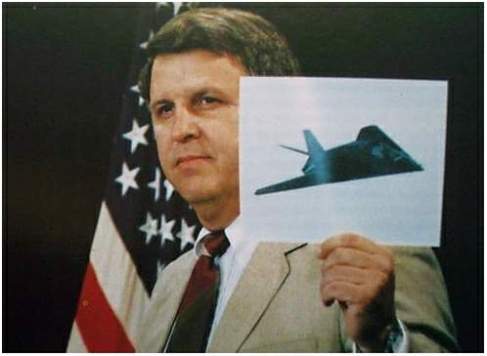
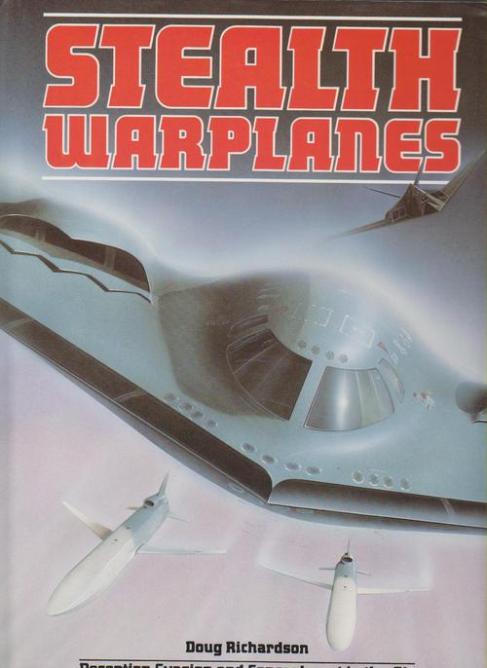
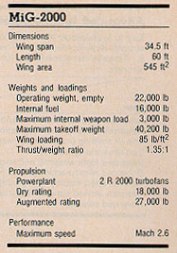

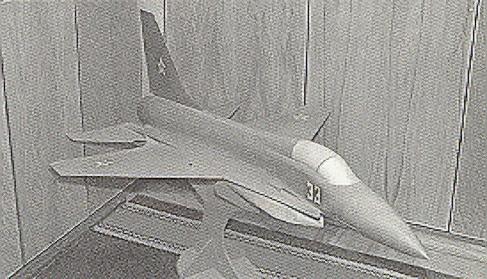
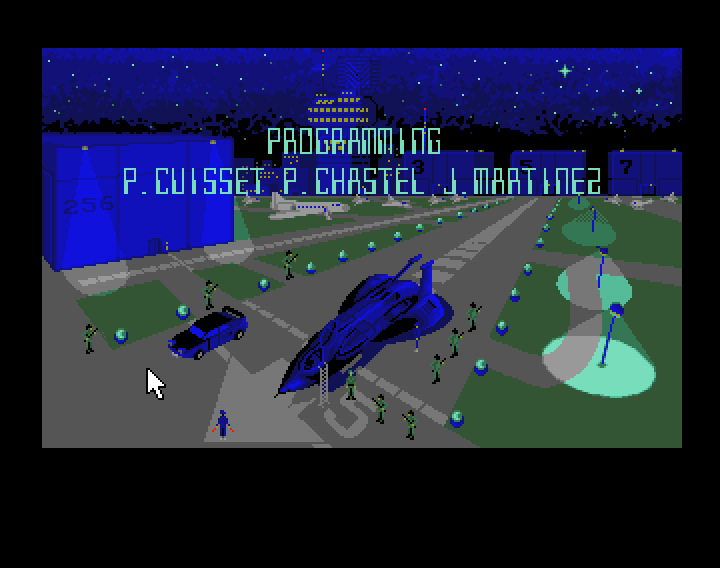
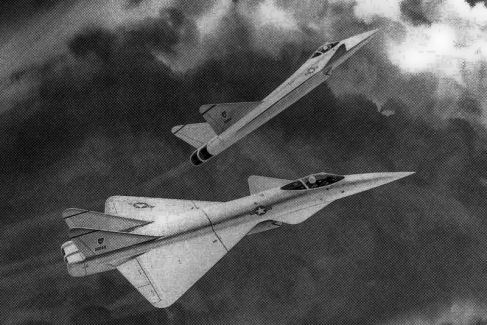
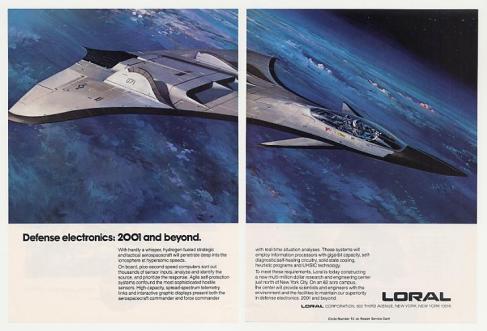
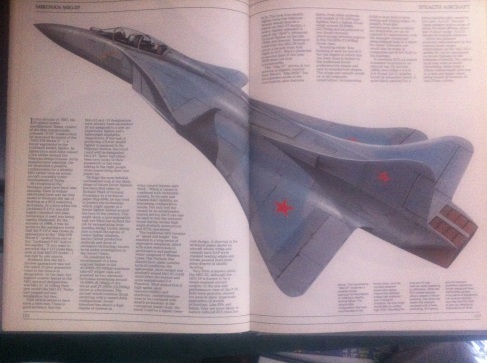
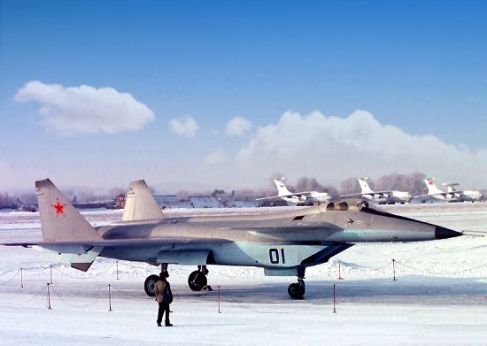
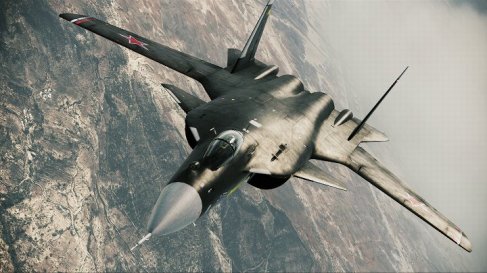
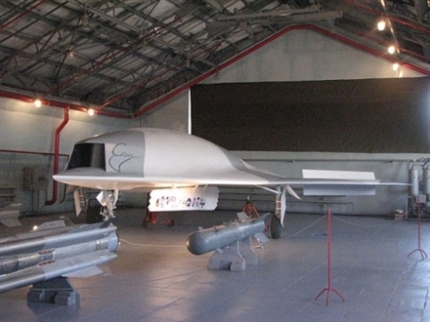
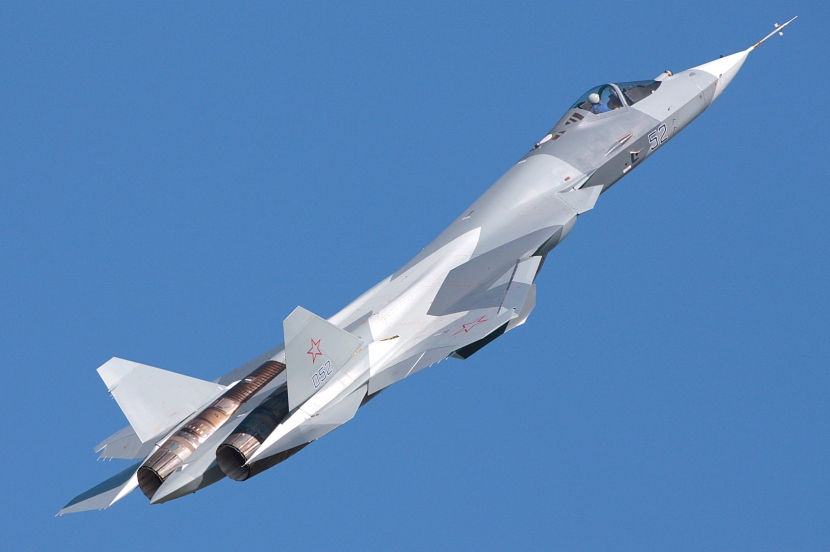





































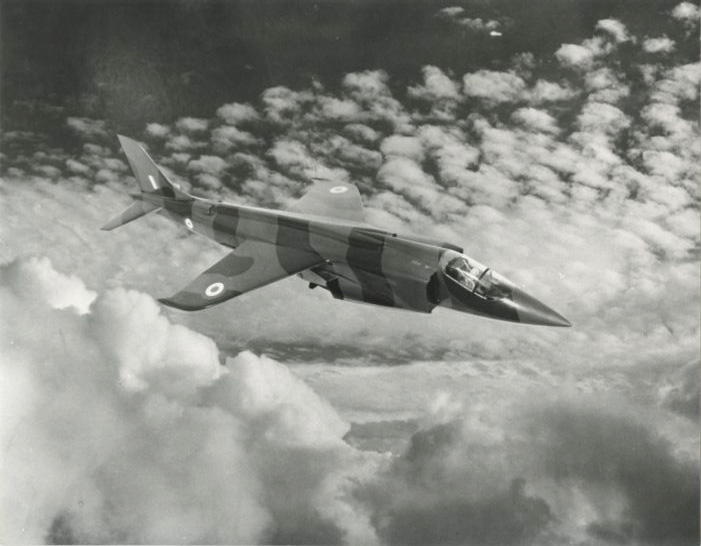

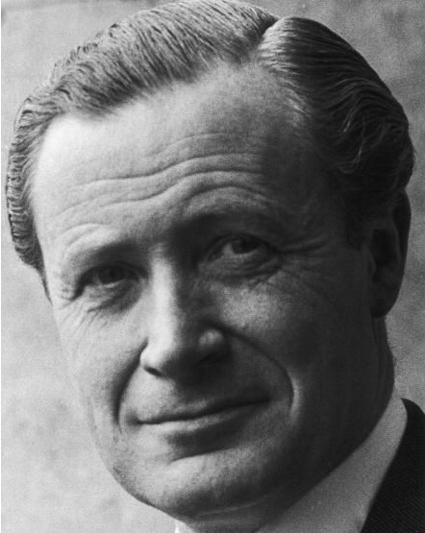

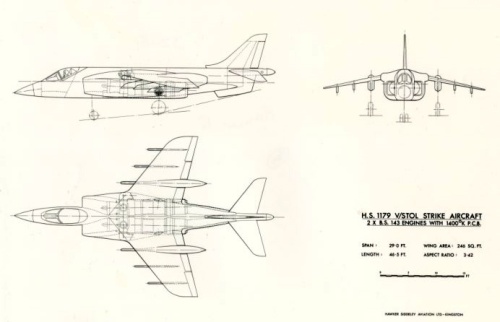





















![Reggiane_Re.2005_SagittarioReggiane_Re.2005_Sagittario[1]](https://hushkit.files.wordpress.com/2012/05/reggiane_re-2005_sagittario1.jpg?w=830)
